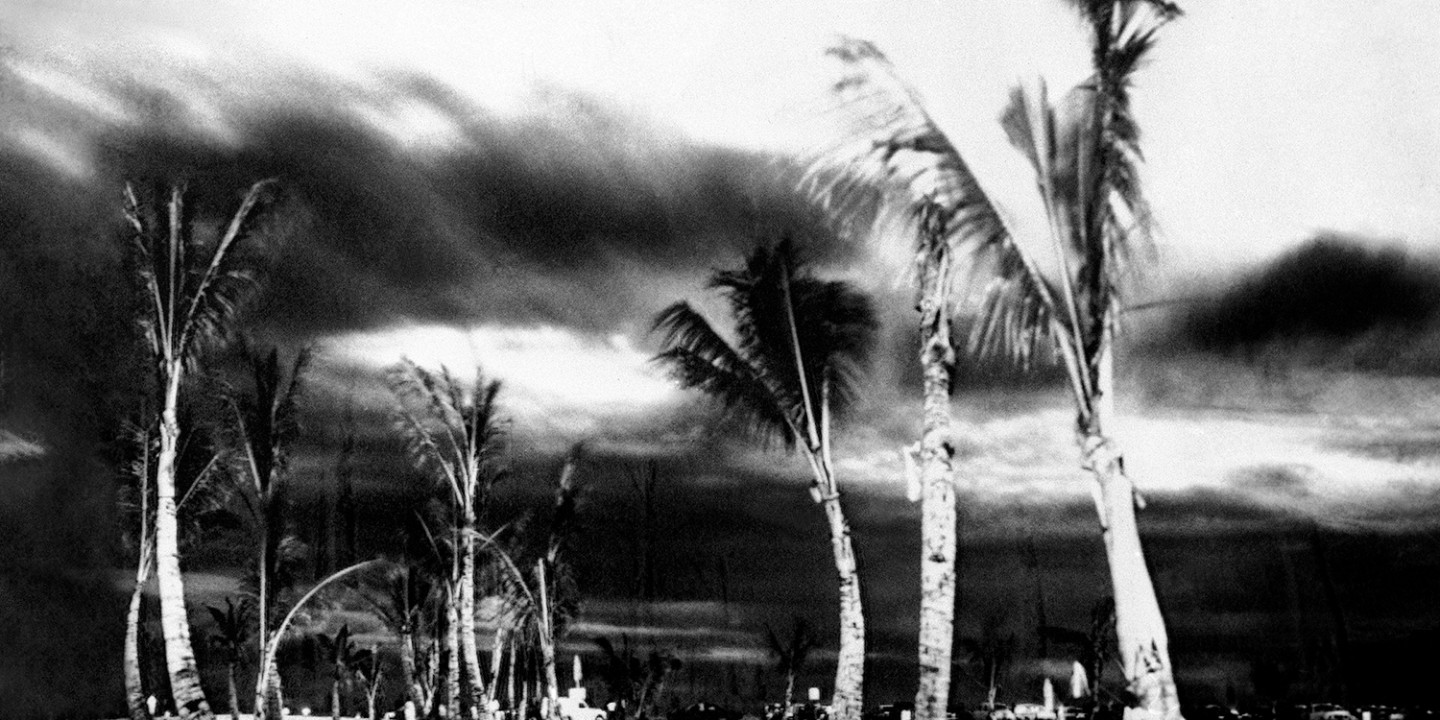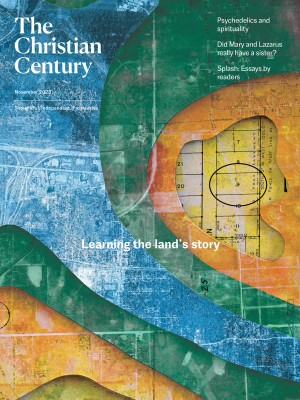The exploding sky
As a teenager in Hawaii, I watched a nearby test of a nuclear weapon. It was the most terrifying thing I’ve ever seen.

On July 9, 1962, the U.S. conducted one of its last high-altitude tests of a nuclear weapon on Johnston atoll in the South Pacific, 900 miles south of Hawaii. I was a high school student in Honolulu, and while few in Hawaii knew what, if anything, we would see of this test, one newspaper headline read, “N—Blast Tonight May Be Dazzling, Good View Likely.”
People were advised that for the best view they should get to a place with an unobstructed view of the sky. My older brother and I drove from our home in navy housing to Tripler Army Hospital on a hill overlooking Pearl Harbor. The test was scheduled for 11 pm.
Read our latest issue or browse back issues.
Newspaper photographs of the event show a huge sunburst in the sky. I don’t recall seeing that. I remember a sudden bright green flash that turned an ordinary night as bright as noon. We stood in the ghastly green and yellow glow, unlike any sunlight I’d ever seen. Over the next 40 minutes, the sky’s color changed from yellow to red and then a deep blood red that lingered, which seemed appropriate. Then the sky turned icy blue, then indigo, and then it was night again. It remains the most terrifying thing I’ve ever seen.
Watching Christopher Nolan’s film Oppenheimer this summer, I was surprised to find myself weeping and gasping for breath during the scene depicting the Trinity test blast of 1945. It took a second viewing of the film for me to figure out why I had such a visceral response to that sequence. It was the way it shows the sky changing colors after the blast. This was something I had seen before.
I’ve since learned that the explosion that I witnessed was called Starfish Prime and was the largest high-altitude thermonuclear warhead test conducted by the United States. It took place at the suborbital altitude of 250 miles. Those planning the test had not expected the blast to cause extensive damage to a place as distant as Hawaii. But the effects of the 1.45 megaton blast were much larger than scientists expected. It knocked out about 300 streetlights and set off numerous burglar alarms. It destroyed a new microwave link the phone company had recently installed to improve communication between the islands.
The biggest shock was that the enormous electromagnetic pulse added millions of radioactive electrons to the earth’s Van Allen radiation belts, which surround the planet. These electrons damaged half a dozen communications satellites, including Telstar 1, the first satellite to broadcast a television signal. The new, unanticipated “Starfish belt” they comprised lingered in space for at least ten years.
Learning this gave new resonance to the scenes in Oppenheimer in which scientists, fearing that the Trinity bomb could cause a chain reaction that would ignite earth’s atmosphere, ran the numbers and decided that it would not. It seems that the scientists behind Starfish Prime had very little idea of what their test would do on earth or in space, which may be the most frightening thing about it. I joked with friends that Oppenheimer reveals the damage that too much math can do. A friend, a physicist, replied that it shows the damage we can do when we trust too much in our own intelligence and create deadly weapons just because we can.
I’ve been recommending Oppenheimer to friends as the work of a great director working with great actors to provide a powerful study of a brilliant but troubled man, a gifted scientist who had difficulty navigating the treacherous world of American politics in the 1940s and ’50s. But I was struck by how contemporary Oppenheimer feels, as 1950s-style paranoia surfaces again in America, with politicians discounting scientists and the truths they uncover, with antisemitism on the rise, and with the growing attraction to fascism in this country and around the world.
Two documentaries make good companion pieces to Oppenheimer. Radio Bikini (1988) is about the nuclear bomb testing conducted by the US military in the South Pacific after World War II. The Day After Trinity (1981) includes interviews with Oppenheimer and many of the scientists featured in the Nolan film. It offers illuminating details about the Los Alamos site and the many scientists who worked there in secret to build the first atomic bomb. It also includes interviews with local people who were kept in the dark about the work being done at Los Alamos and suffered from its aftereffects for years. The film’s title is from something Oppenheimer said to a journalist in the 1960s. Asked if President Lyndon Johnson should seek an international treaty for the control of nuclear weapons, Oppenheimer replied, “It’s twenty years too late; it should have been done the day after Trinity.”
Watching Oppenheimer and recalling that terrifying night in Hawaii shocked me out of accepting as routine the frequent mention of Russia’s potential use of nuclear weapons in Ukraine. Today’s weapons are much more powerful than the bombs born of Trinity that devastated Hiroshima and Nagasaki in 1945, more powerful than that thermonuclear warhead I saw in 1962.
My father’s experience of that night is a sobering reminder of how stubborn human indifference can be. Dad was the navy bandmaster at Pearl Harbor, but that night he had a gig playing cornet in a dance band at a beachfront hotel in Waikiki. When the sky exploded, the band and the waiters went outside to see the phenomenon. The tourists immediately began shouting; they wanted to know why the music had stopped and why their next drinks hadn’t arrived.
Fortunately for the planet, and for all of us, a 1967 treaty banned the testing of nuclear weapons in space. But the awe and fear I experienced that night in 1962 linger. I witnessed what can happen when humans use the building blocks of creation for their own purposes and do great harm in the name of defense.





